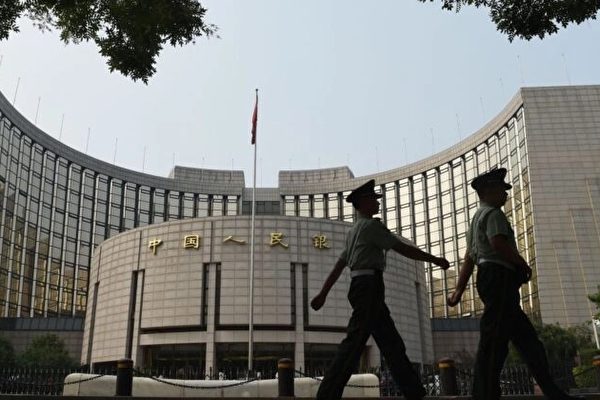The local governments under the Chinese Communist Party have accumulated massive debts over the years, posing a significant potential risk to their financial system. The Ministry of Finance of the Chinese Communist Party announced the establishment of a new unit called the “Debt Management Bureau” on the 3rd of this month, claiming to strengthen debt monitoring and supervision to prevent hidden debt risks. Experts believe that the entire debt operation of the Chinese Communist Party authorities has degenerated into a political farce.
According to reports from Chinese Communist Party media, the Debt Management Bureau of the Ministry of Finance of the Chinese Communist Party is divided into several departments, including a comprehensive department, a central debt department, two local debt departments, an issuance and payment department, and a monitoring and management department. The main responsibilities of the Debt Management Bureau include formulating and implementing domestic debt management systems and policies for the Chinese Communist Party government, devising central and local government debt management systems and measures, preparing plans for national debt and local government debt balance limits, strengthening government debt monitoring and supervision, and preventing and resolving hidden debt risks.
The director of the Debt Management Bureau is Li Dawei, with deputy directors Qu Fuguo and Zhao Zeyong. Li Dawei previously served as the director of the Government Debt Research and Evaluation Center of the Ministry of Finance of the Chinese Communist Party and also held positions as the deputy director of the Budget Department and a Level-1 Inspector of the same department.
In 2024, the Chinese government introduced a 1 trillion yuan debt restructuring plan to alleviate the enormous debt pressure on local governments and avoid systemic risks.
On September 12 this year, Minister of Finance of the Chinese Communist Party, Lan Foan, stated that by the end of 2024, hidden debts of local governments amounted to 10.5 trillion yuan. This is the latest disclosed balance of hidden debts of local governments officially.
Hidden debts refer to debts incurred by local governments beyond the statutory government debt ceiling through direct repayment commitments with fiscal funds or illegal guarantees. Chinese Communist Party data is often accused of being concealed, with foreign media reporting that hidden local government debts in China could reach as high as 60 trillion yuan.
Lan Foan further revealed that by the end of 2024, the total debt of the Chinese Communist Party government stood at 92.6 trillion yuan, including national debts of 34.6 trillion yuan and statutory debts of local governments of 47.5 trillion yuan in addition to local government hidden debts.
In response to the data released by Lan Foan, Chinese issues expert Zhang Tianliang previously stated in the program “Tianliang’s Political Commentary” that this conceals deeper structural problems.
He analyzed that according to official data, in 2024, China’s total fiscal revenue amounted to 23.4 trillion yuan, with the central fiscal revenue at 10.1 trillion yuan and local fiscal revenue at 13.3 trillion yuan. The main source of the central government’s revenue comes from taxes collected by local authorities, which is then redistributed to impoverished regions through fiscal transfers. In 2024, the total amount of fiscal transfers from the central government to local governments reached 10.2 trillion yuan, exceeding the central fiscal revenue of 10.1 trillion yuan. This means that even after transferring all income to local governments, the central government still needed to subsidize approximately 100 billion yuan, leading to a severe shortage of central operating funds.
He emphasized that the central government needs to annually expend 4.5 to 5 trillion yuan on national defense, education, diplomacy, the Belt and Road Initiative, and government operations. However, due to all income being used for transfers, these expenses are entirely reliant on borrowing. “Every penny spent by the central government is borrowed,” and this situation is “extremely frightening.”
Chinese issues expert Wang He wrote in The Epoch Times that after 2020, the financial strength of Chinese local governments weakened, and their debt ratios rapidly increased, reaching 332% by 2022 (broad caliber, including explicit debts and urban investment debts). Regions with the highest debt ratios such as Chongqing, Tianjin, Guizhou, Heilongjiang, Hubei, and Xinjiang all exceed 600%.
Commentator Li Linyi pointed out that the establishment of a dedicated department by the Chinese Communist Party’s Ministry of Finance for debt restructuring indicates that the local government debt, this “gray rhinoceros,” has made the authorities fearful. In recent years, the Chinese Communist Party has been trying to restructure debts, proposing so-called comprehensive debt restructuring plans, but the results have been minimal, only concealing figures. The entire debt restructuring process is, in reality, a power struggle and infighting between the central and local governments, turning debt restructuring into a political farce, where debt could potentially crush Evergrande and even the Chinese Communist Party regime.

